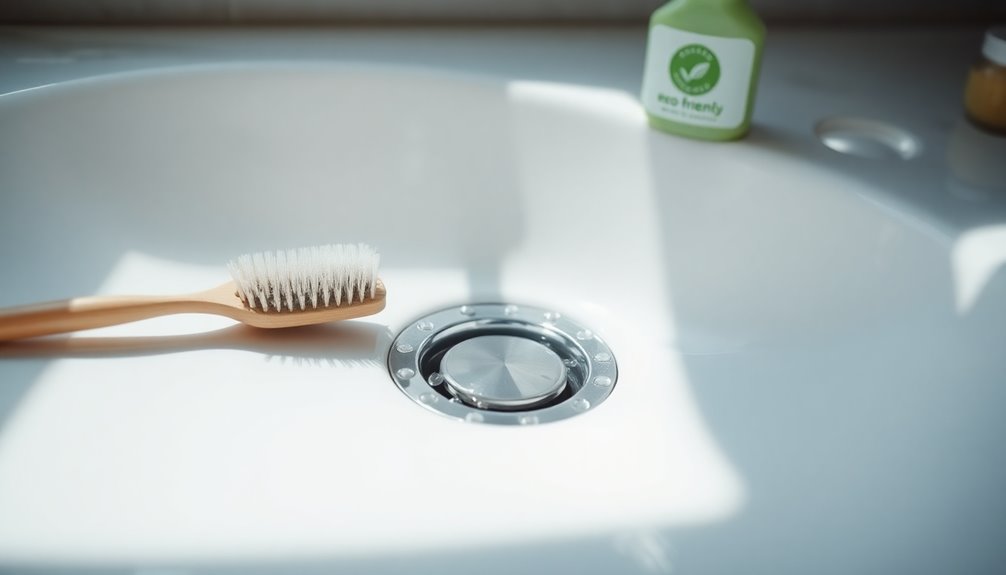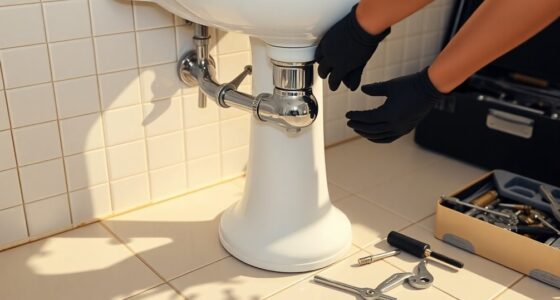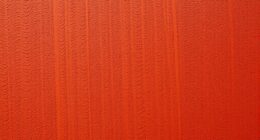To clean the overflow hole in your sink, gather a sink-cleaning brush and boiling water. Insert the brush into the hole and flush it with 2-3 quarts of boiling water using a silicone funnel. Repeat until it's clear of buildup. If you notice odors, pour baking soda and vinegar down the drain, let it fizz, then flush with boiling water. Regular cleaning keeps the hole clear and prevents issues. There's more to learn about upkeep and options!
Key Takeaways
- Gather tools like a sink-cleaning brush, silicone funnel, boiling water, and a microfiber cloth for effective cleaning.
- Insert the sink-cleaning brush or pipe cleaner into the overflow hole to remove buildup.
- Carefully pour 2-3 quarts of boiling water into the overflow hole using a silicone funnel to flush debris.
- To eliminate odors, pour 1 cup of baking soda followed by 1 cup of distilled white vinegar down the drain.
- Regularly clean and flush the overflow hole to maintain clarity and prevent mildew growth.
Understanding the Importance of the Overflow Hole

While you may not think about it often, the overflow hole in your sink plays an important role in preventing water disasters. This small feature diverts excess water, acting as a safety mechanism against flooding if a faucet is left running or plumbing issues arise.
Keeping the overflow hole clear is essential for ideal drainage and water flow, helping maintain your sink's functionality. If it gets blocked, you might encounter unpleasant odors and an environment conducive to mildew and mold growth, which can harm your bathroom's hygiene.
Regularly addressing any buildup in the overflow hole is significant for preventing these issues, ensuring a pleasant atmosphere and a cleaner environment. So, don't overlook this important aspect of your sink!
Essential Tools for Cleaning the Overflow Hole

Cleaning the overflow hole in your sink requires a few essential tools to guarantee the job is done effectively.
First, grab a sink-cleaning brush or a pipe cleaner to remove any buildup clogging the overflow hole. You'll also need a silicone funnel that can withstand boiling water, which will help direct the hot water into the hole during cleaning.
Boiling water—about two to three quarts—is key for flushing out debris and improving drainage in your kitchen sink. A microfiber cloth is handy for wiping away any visible gunk around the area.
Finally, having a helper nearby can enhance safety while handling boiling water, reducing the risk of burns and ensuring a smoother cleaning process.
Step-by-Step Guide to Cleaning the Overflow Hole
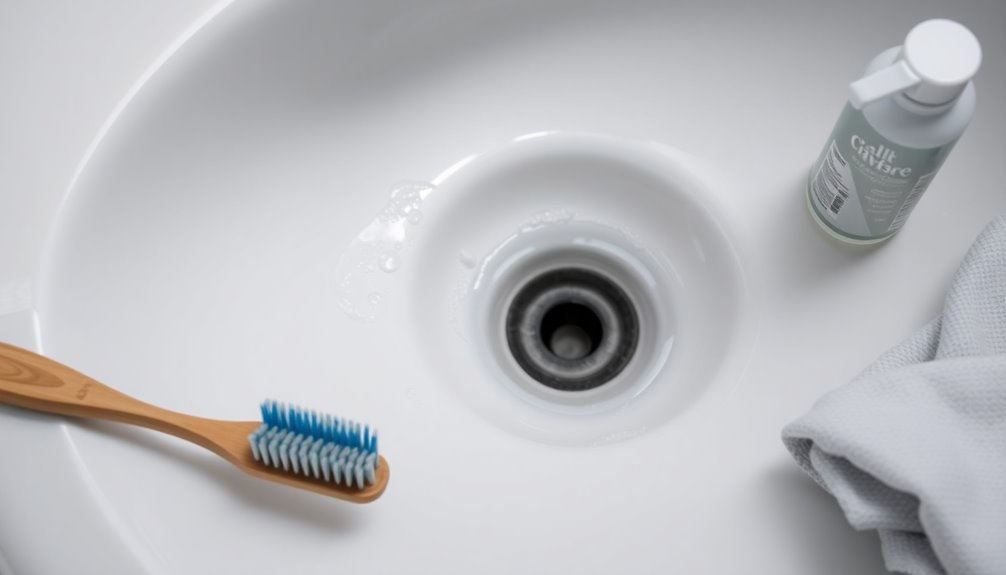
To tackle the overflow hole cleaning process effectively, start by gathering your tools and materials.
Insert a sink-cleaning brush or pipe cleaner into the overflow hole, pushing it in and out to dislodge any buildup.
Next, prepare two to three quarts of boiling water. Use a silicone funnel to carefully pour the hot water into the overflow hole, flushing out any remaining debris.
For added effectiveness, repeat the brush insertion and boiling water flush as necessary until the overflow hole is thoroughly cleaned.
Regularly maintaining this process guarantees peak drainage and hygiene.
While baking soda is great for eliminating odors, we'll cover that in the next section, so focus on this cleaning method for now.
Dealing With Odors in the Overflow Hole
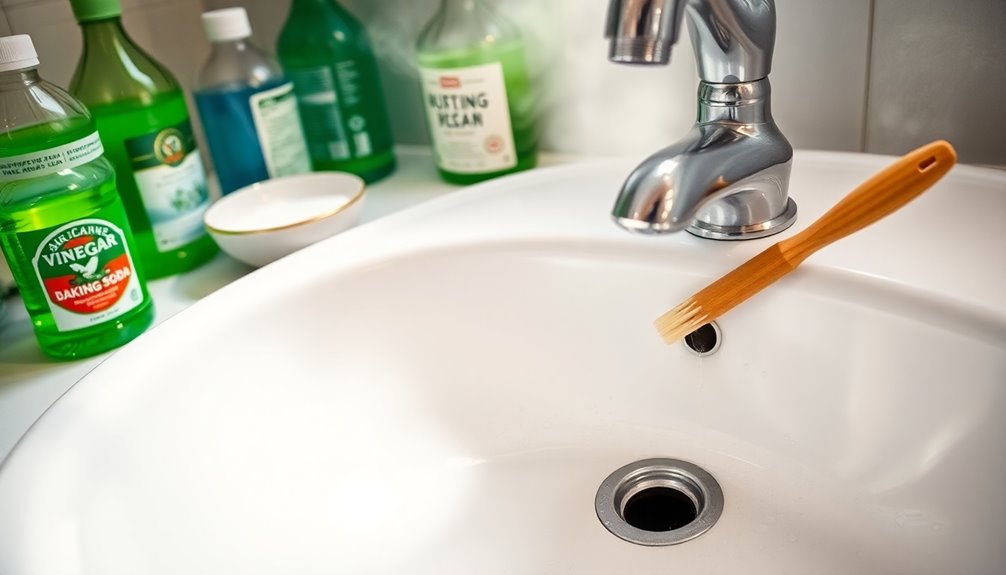
If you've noticed unpleasant odors coming from your sink's overflow hole, it's important to address the issue promptly.
Start by pouring a little bit of baking soda down the drain using a funnel—about 1 cup will do. This natural deodorizer works wonders.
Next, follow it with 1 cup of distilled white vinegar, creating a fizzing reaction that breaks down buildup and neutralizes odors.
Let this mixture sit for 15 minutes to maximize its effectiveness.
Afterward, flush the overflow hole with boiling water to wash away any remaining debris and odors.
If the odors persist, you may need to repeat this process to make sure your overflow hole smells fresh and clean.
Maintaining a Clear Overflow Hole for Optimal Functionality
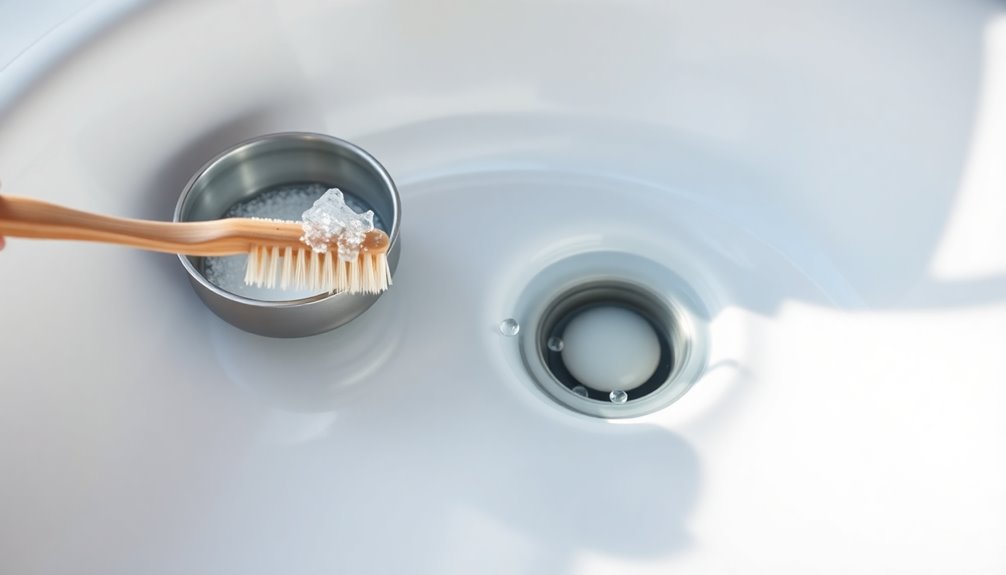
Addressing odors in your sink's overflow hole is just the first step; maintaining its clarity is essential for ideal functionality. This small hole can easily clog with debris, hindering its ability to divert excess water effectively.
To prevent this, incorporate regular cleaning into your routine. Use a sink-cleaning brush or pipe cleaner to remove buildup, ensuring it stays hygienic. Flushing the overflow hole with boiling water periodically helps eliminate stubborn debris and unpleasant odors.
By keeping the overflow hole clear, you reduce the risk of mildew and mold growth, creating a healthier environment. A clean overflow hole enhances water drainage, preventing flooding and maintaining the overall efficiency of your sink.
Stay proactive, and your sink will thank you!
Frequently Asked Questions
How to Clean Inside Sink Overflow Hole?
To clean inside the overflow hole of your sink, you'll want to use a sink-cleaning brush or a pipe cleaner.
Insert it into the hole and move it in and out to dislodge any buildup.
Next, boil some water and carefully pour it in to flush out debris.
For deeper cleaning, try pouring a mix of baking soda and vinegar, followed by boiling water.
Regularly doing this keeps your sink hygienic and odor-free.
What Is the Black Gunk in My Sink Overflow?
The black gunk in your sink overflow is likely a mix of soap scum, hair, and organic debris.
It builds up over time, especially in stagnant water, creating an ideal environment for mold and mildew. This residue not only causes unpleasant odors but can also clog the overflow hole, affecting its ability to prevent flooding.
Regular cleaning helps keep this gunk at bay and maintains your sink's functionality.
Why Does the Overflow Hole in My Sink Smell?
Oh, the delightful aroma wafting from your sink's overflow hole—nothing says "welcome home" like a whiff of mildew and decay!
That smell's likely from trapped debris, mold, or even stagnant water lounging around. If you've got soap scum and hair throwing a party, they're the culprits too.
Regular cleaning can help, but if the stench persists, it might be time to call in the plumbing reinforcements.
Don't let it linger!
How to Get Mold Out of Sink Overflow?
To get mold out of your sink overflow, start by inserting a sink-cleaning brush or pipe cleaner to dislodge any visible buildup.
Next, mix one cup of baking soda with one cup of distilled white vinegar and pour it down the overflow hole.
Let it sit for 15 minutes, then flush with boiling water.
Regular checks and cleanings every few months will help prevent mold from returning and keep your sink fresh.
Conclusion
Cleaning your sink's overflow hole is essential for maintaining hygiene and preventing clogs. Did you know that nearly 70% of homeowners overlook this small but important feature? By following the steps outlined, you can guarantee your overflow hole stays clear and odor-free. Regular maintenance not only enhances your sink's functionality but also extends its lifespan. So, don't skip this simple task—your sink will thank you for it!
